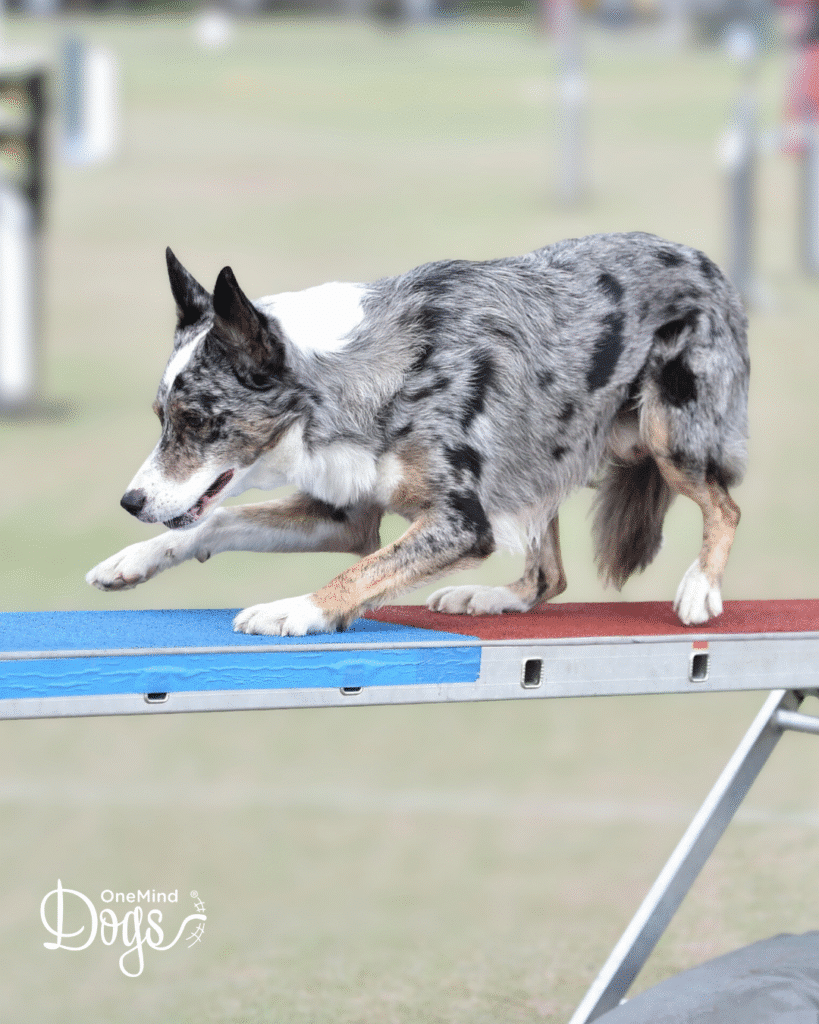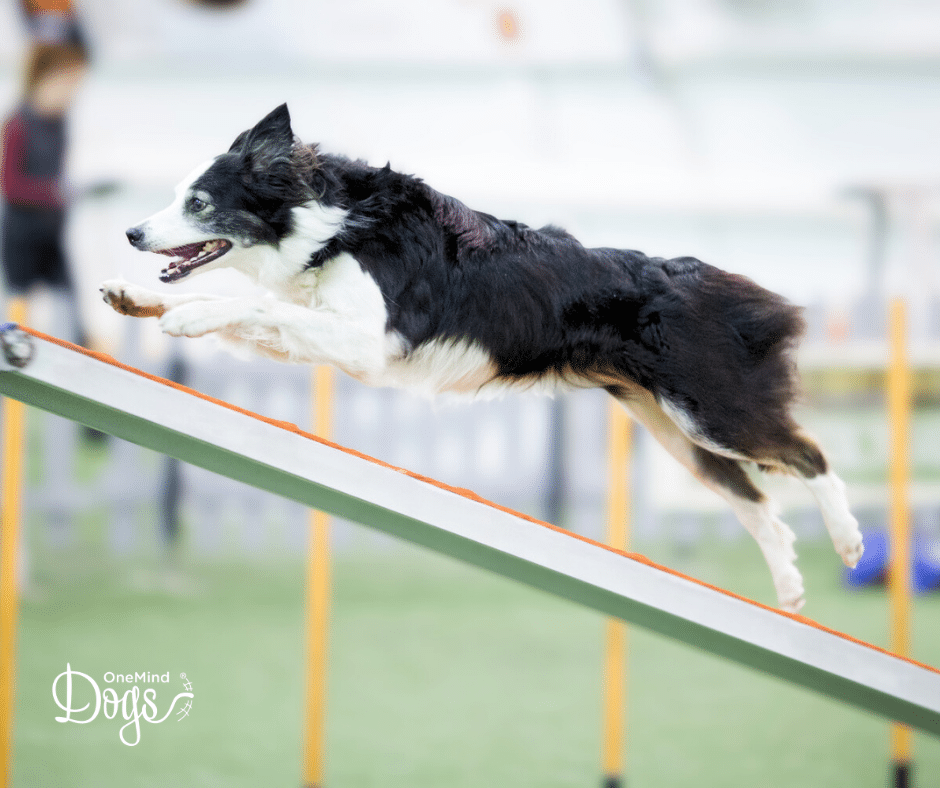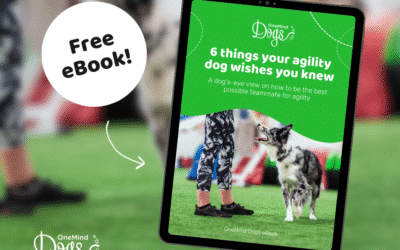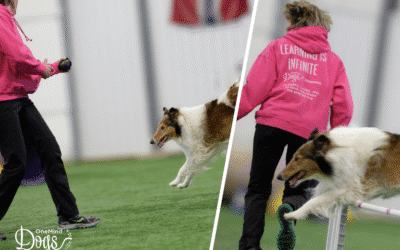If your dog hesitates, creeps, or flies off the contact zone, you’re not alone. Contact behavior is one of the most common challenges in agility, and it can be frustrating when things fall apart after so much effort.
At OneMind Dogs, we believe contact training isn’t about perfection. It’s about communication, trust, and clarity. When your dog truly understands what you’re asking for, consistency becomes natural.
Why contact training matters
Contacts are more than just the yellow zones on the A-frame, dog walk, and teeter. They are moments of teamwork, trust and safety.
When your dog knows exactly what to do at the end of an obstacle, they move with confidence and purpose. Clear criteria don’t just lead to cleaner runs. They also help your dog stay focused, relaxed, and connected with you.
Reliable contacts allow you to handle with confidence too, knowing your dog understands their job no matter where you are on the course.
Why contact performance breaks down
It’s rarely a problem of motivation. Most contact mistakes happen because the dog feels unsure. When expectations are unclear, dogs start guessing, which leads to inconsistency.
Some common causes of contact problems include:
- Changing criteria between obstacles (for example, running on one, stopping on another)
- Releasing too early or rewarding when the dog breaks position
- Lack of proofing in new environments
- Confusing or conflicting body cues from the handler
When we look at contact training from the dog’s perspective, these mistakes make perfect sense. Your dog isn’t being difficult. They’re just trying to figure out what earns the reward.

Clear communication builds confidence
Before you think about speed, focus on clarity. Ask yourself:
- Does my dog truly understand what’s expected at the end of each contact?
- Do I use the same release cue every time?
- Am I consistent between training and competition?
Whether you use stopped or running contacts, what matters most is that your dog can clearly recognize the pattern. With the OneMind Dogs method, you’ll learn to use body language in ways that are natural for your dog to interpret.
The goal is for your dog to understand their task instantly, without hesitation or confusion.
Rebuilding confidence one step at a time
If your dog has lost confidence, take a step back. Lower the height of the equipment, make the setup simple, and reward generously for effort and understanding.
Focus on three things:
- Clarity: Reward only when your dog meets your contact criteria.
- Consistency: Keep your criteria identical in every environment.
- Confidence: End sessions with success, even if that means going back a step.
Little victories add up. Every repetition helps your dog feel certain about what you want.
Proofing for the real world
Once your dog understands the behavior, it’s time to test it. Proofing is how you make sure your contact training holds up under pressure.
Add distractions. Change your speed. Try it in new locations. Practice walking past the contact, slowing down, running ahead or even handling the next obstacle.
Your goal is for your dog to perform the same behavior no matter what you do. When your contact training is truly solid, your dog won’t need to rely on your exact position. They’ll know their job, and they’ll be proud to do it.
Keep contact training fun
Training should never feel like work for your dog. Keep sessions short, reward generously, and make it a game they enjoy. If something goes wrong, don’t correct out of frustration. Instead, look at what your dog may have misunderstood.
Remember, your dog is always trying to get it right. It’s our job to make that easy for them.
When contact training feels fun, you’ll notice your dog’s confidence grow. You’ll both start to move in sync, with trust and understanding. That’s when agility becomes truly magical.
Ready to make your contacts consistent?
Watch our free webinar, 3 Steps to Consistent Contacts in Agility, and learn how to set clear criteria, proof performance, and build reliable contacts from your dog’s perspective.



